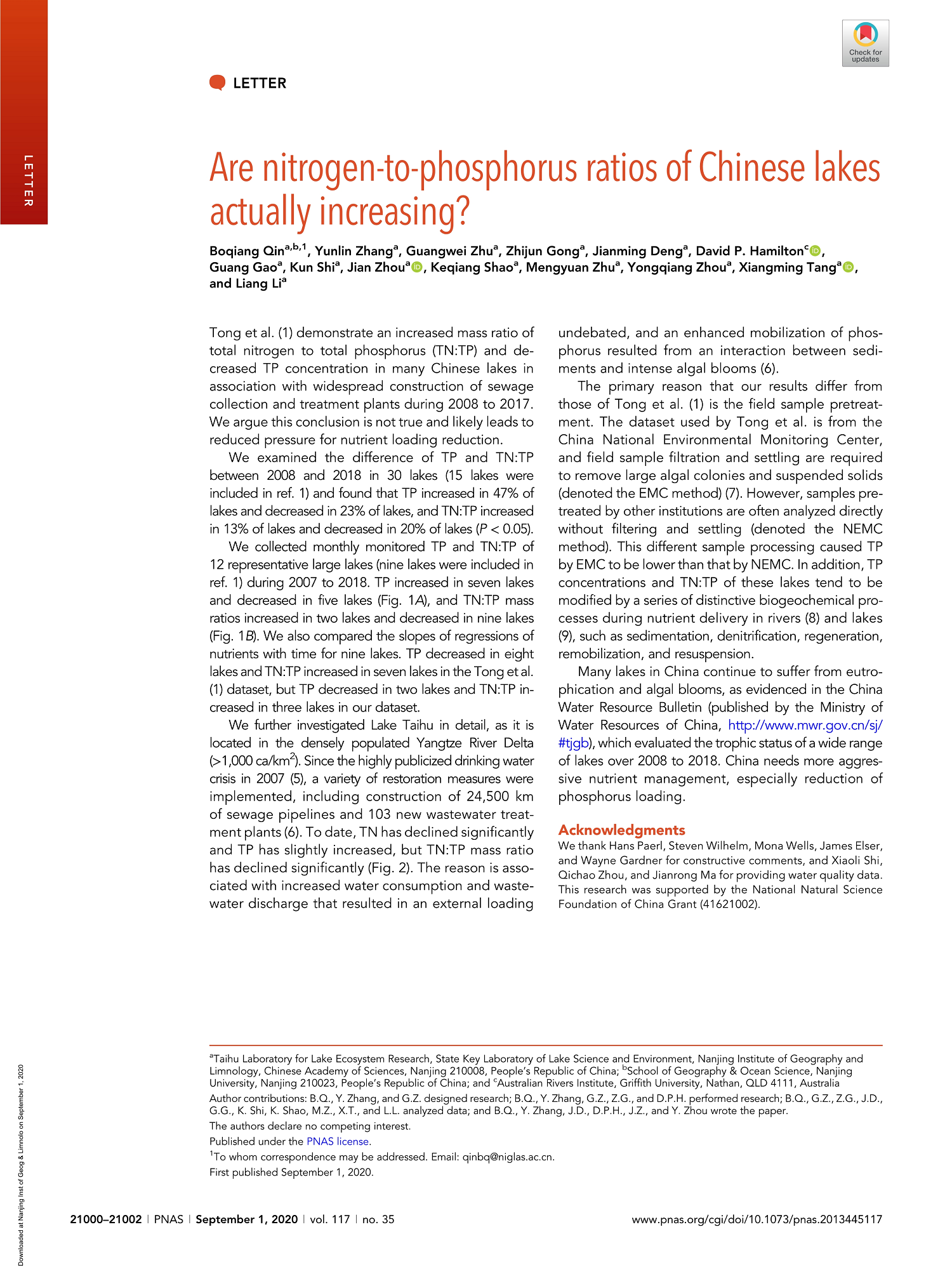More Nutrient Reduction Still Needed to Save Lakes in China
Chinese people have been paying more and more attention to water safety, especially since the Wuxi “water crisis” in Lake Taihu in 2007. However, more than 10 years after the crisis, how healthy are Chinese lakes now?
A scientific research group, led by the Nanjing Institute of Geography and Limnology Chinese Academy of Sciences (NIGLAS), has been monitoring the health status of lakes in China. As indicated by the research covered 30 lakes during 2008 and 2018, total phosphorus (TP), which is one of the major pollutants in Chinese lakes, increased in 47% of the lakes, while chlorophyll a (Chla) increased in 70% of the lakes. A dataset showing the results of monthly monitoring in 12 typical lakes also proved the increase of TP and Chla.
Lake Taihu is a good example of lake restoration efforts in China, since more resources have been put into it than into any other lake in China. However, results show that both TP and Chla have increased markedly in the lake since 2007, while total nitrogen (TN) has decreased significantly. As a result, cyanobacteria blooms have shown no sign of easing.
“This is because external loading was not fully controlled,” said QIN Boqiang, lead scientist on the research. QIN noted that construction of an urban sewage pipe network effectively reduced the concentration of pollutants from urban discharge into the water body. However, the total amount of discharged pollutants did not decrease, due to the simultaneous increase in urban population and the rapid increase in urban water consumption.
Upgrading the technology of heavy-polluting enterprises or closing them altogether has effectively reduced point source pollution. However, agricultural and urban non-point source pollution has not been significantly reduced over the past 10 years.
In addition, the contribution of internal loading has been ignored for a long time. For example, as the economy developed, many pollutants were discharged into lakes via rivers. Unfortunately, the flow rate of lakes is very low in comparison with rivers. As a result, pollutants settled to the bottom of lakes, thus becoming a potential source of pollution.
Many lakes in China are shallow lakes and sediments are prone to resuspension due to disturbances such as wind and waves. “The pollutants in the sediments continuously enter the water body, thereby offsetting the positive effects of reducing external sources, especially in the initial stage of external source reduction,” said QIN.
Climate change has also partially offset the positive effects of pollution control and lake management in recent years. For example, higher temperatures and more frequent heavy rain have accelerated the input and mineralization of nutrients in basins and lakes. At the same time, reduced wind speed also enhances water column stability in lakes and promotes the release of nutrients from sediments.
Based on this research, the group said that lake restoration in China should involve the reduction of effluent nutrients, especially phosphorus. QIN noted that such reduction should be “stricter in the future” to offset the negative effects of climate change and internal loading from sediments.

